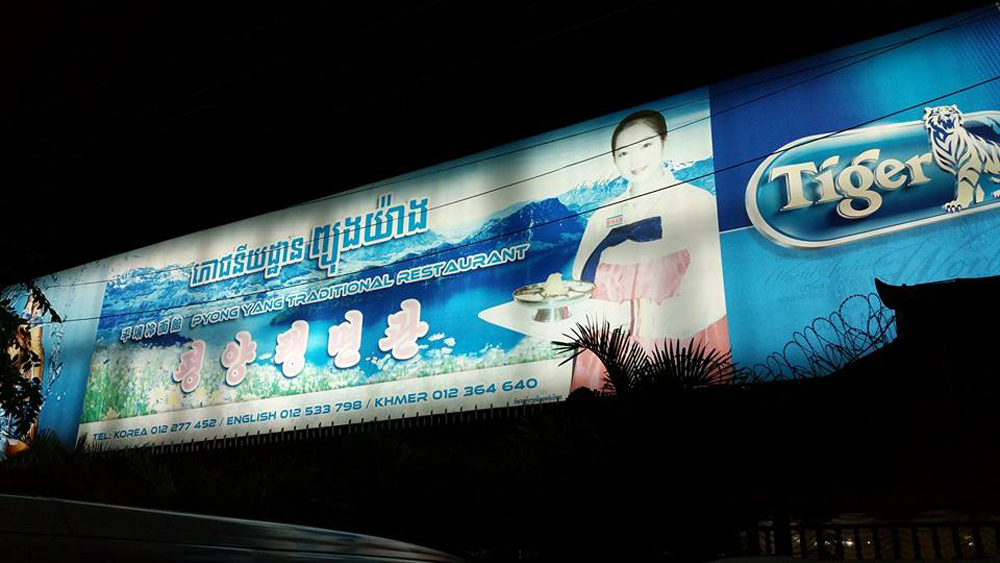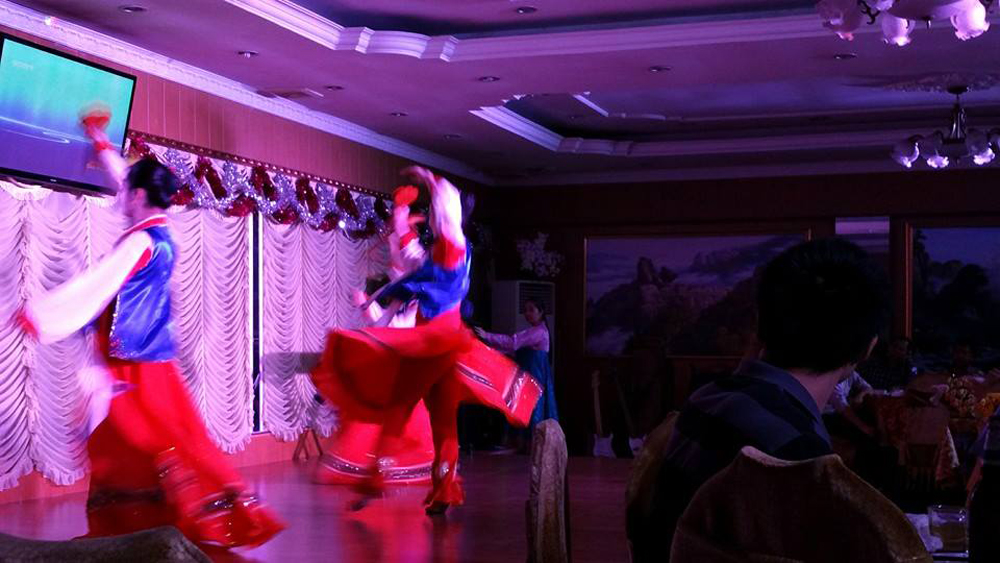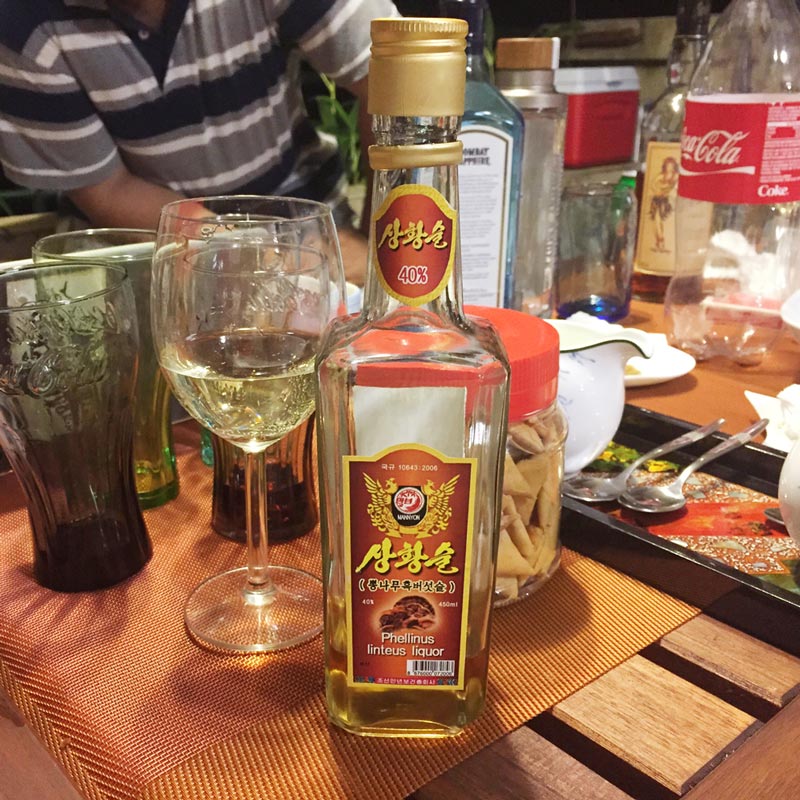Sign up for trending news and first dibs
A North Korean Interlude: Dining at the Pyongyang Restaurant
A North Korean Interlude: Dining at the Pyongyang Restaurant
Unbeknownst to many, the North Korean government actually runs several restaurants outside the country. Our resident booze and travel contributor, Hiasa Kyte, visits one of them in Phnom Penh, Cambodia.
By Hiasa Kyte

The Pyongyang Restaurant in Phnom Penh, Cambodia, one of the chain’s many branches in the world
North Korea. Without saying anything else, the mere mention of the Democratic People’s Republic has probably kicked off a slideshow of images in your head.
You think of leaders Dear, Great and Eternal. You remember the shaven-side haircuts, botched missile launches and colossal parades held in the world’s biggest stadium. You run through the list of crazy stories that turned to be false and the list of even crazier stories that turned out to be true.
But what is it really like? Short of a pricey guided tour and an edge-of-your-seat ride aboard an Air Koryo Tupolev, most people won’t find out for themselves. That is unless you visit Pyongyang Restaurant. Run directly by the North Korean government and staffed entirely by North Korean citizens, Pyongyang Restaurant owns branches in cities across Asia, including Cambodia’s capital, Phnom Penh.
I first attempted to visit the Pyongyang Restaurant there in mid-2009. Riding in the back of a tuk tuk I peered out into the sea of light along Monivong Boulevard for the magical words, but there was nothing. At its address stood a drab building shrouded in shadows.
Not long after, I found out the reason for my failure.
The restaurant had shut its doors because of the global financial crisis. Or, if you believe the report in The Phnom Penh Post at the time, the closure was a result of an altercation with a customer who wanted to ask a waitress out. The movement of Pyongyang’s employees is tightly controlled and the cost of such a “defection” can be the repatriation of the entire crew, so make of it what you will.
The restaurant eventually reopened some months later. Six years on, I found myself back in Phnom Penh, and returned to its dusty central thoroughfare with three intrepid companions to try my luck once more.
Where previously there had been darkness, a girl in a choson-ot shines out on a signboard sponsored by Tiger Beer. Pyongyang Restaurant is open for business. Chunky luxury MPVs block the entrance, an indication of the restaurant’s most prominent clients – South Korean expats.
As advertised, we are greeted at the door by a host in Korean traditional dress and quickly ushered to a table beside a stage. At this point, one might expect to be confronted with heroic depictions of the working class struggle. Instead, we get kitschy confines that resemble the second tier Chinese restaurants of yesteryear – pale drapes, stock paintings and cheap chandeliers.

Waitresses double up as performers at the Pyongyang Restaurant
Thumbing through the menu, some stereotypes are fulfilled – there’s braised dog – but most of the rest of it is familiar. Prices are particularly eye-watering though; a plate of grilled eel sets you back a cool US$35.
A businesslike waitress arrives to take our order and we settle on kimchi fried rice and a bottle of North Korean mushroom soju. The “Phellinus linteus liquor” costs four times more than any South Korean counterpart, but it’s worth it. Poured over slivers of ice, it has the character of an unusual whisky with smoothness that doesn’t give away its strength. We knock back a couple of glasses as the lights go down and the show begins.
The highlight of the dining experience at Pyongyang Restaurant is its dinner show with waitresses doubling up as singers, dancers and musicians – complete with multiple costume changes. It commences just after 7.30pm and lasts for about an hour.
The first act is a simple karaoke number and a welcome in four languages. Halfway through, the girls filter through the dining area, handing out bouquets of flowers to patrons. Joining the aforementioned South Koreans are a handful of locals, a few men from China and the odd White Guy. Our table receives no flowers, but we’re soon thankful for that. With each performance, men rise sheepishly from their seats to hand the arrangements over to girls whom they’ve deemed worthy. Some are delivered directly with a respectful bow while others are placed at the feet of performers.
During a dance piece early on, I spot our waitress as she transforms from efficient server to consummate artiste. Now decked out in a billowing outfit, she spins at breakneck speeds with two compatriots as a folk aria reaches a crescendo. It’s stirring stuff. Later, she returns to check on our table, smiling broadly as she glistens with sweat from her exertions. More sing-alongs, a fan dance, a gayageum player and a solo violinist follow, then a single song from a band with a bass guitar that threatens to fry the speakers with every note.
The night winds down, and our waitress stops by our table again. Her work almost finished, she takes some time out for a bit of small talk. “Where are you from? How old are you?” she asks in accented Mandarin. We speak as much as our limited language overlap will allow before the conversation concludes in laughter.
To show our appreciation, I give her a 50 cent coin from back home as a token of good luck rather than a genuine tip. Examining it, she asks me for its value. “About 40 cents in US money,” I say. She feigns shock at the small amount, but keeps it, her grin as bright as ever. In that moment, I realize something. The main draw of Pyongyang Restaurant will always be the opportunity to witness the eccentricities of the so-called hermit kingdom. But beyond than that, it presents a chance to make a brief connection with someone from a world completely different from your own. These connections show us that some things are always the same, no matter where we come from.
With the effects of the mushroom soju beginning to surface, I shake her hand and finally introduce myself in bad English and terrible Mandarin. “I’ll remember,” she replies, “I’m Kwon Pyol.” I briefly consider asking for her number, but then I remember where I am. Just last year, a North Korean waitress at another establishment in Siem Reap had escaped with a married South Korean man, adding to the tension between the two neighbors. I may cause a diplomatic row someday, but for now, memories will suffice.
Hiasa Kyte is a regular contributor to Straatosphere. From absinthe to zinfandel, Hiasa drinks it all. While he knows his way around grand old whiskies and Bordeaux First Growths, he gets his real kicks trying unheralded booze found on the dusty lower shelves of the alcohol world.
TAGS
Tags:








